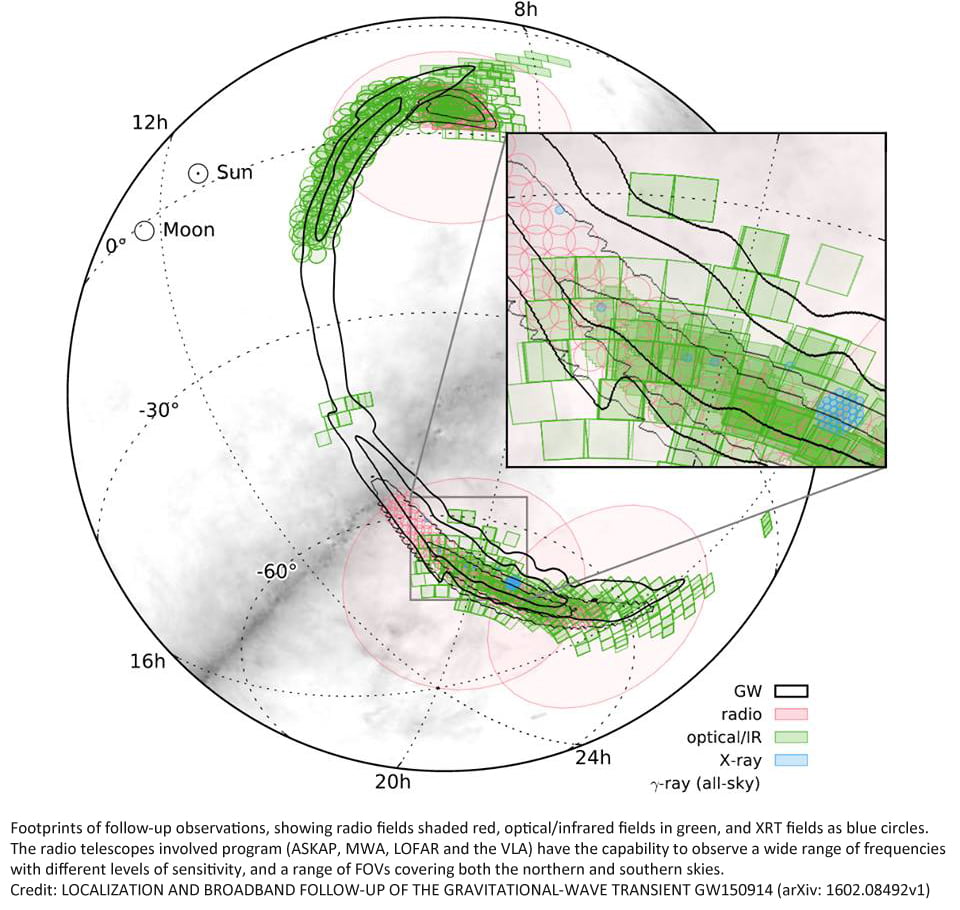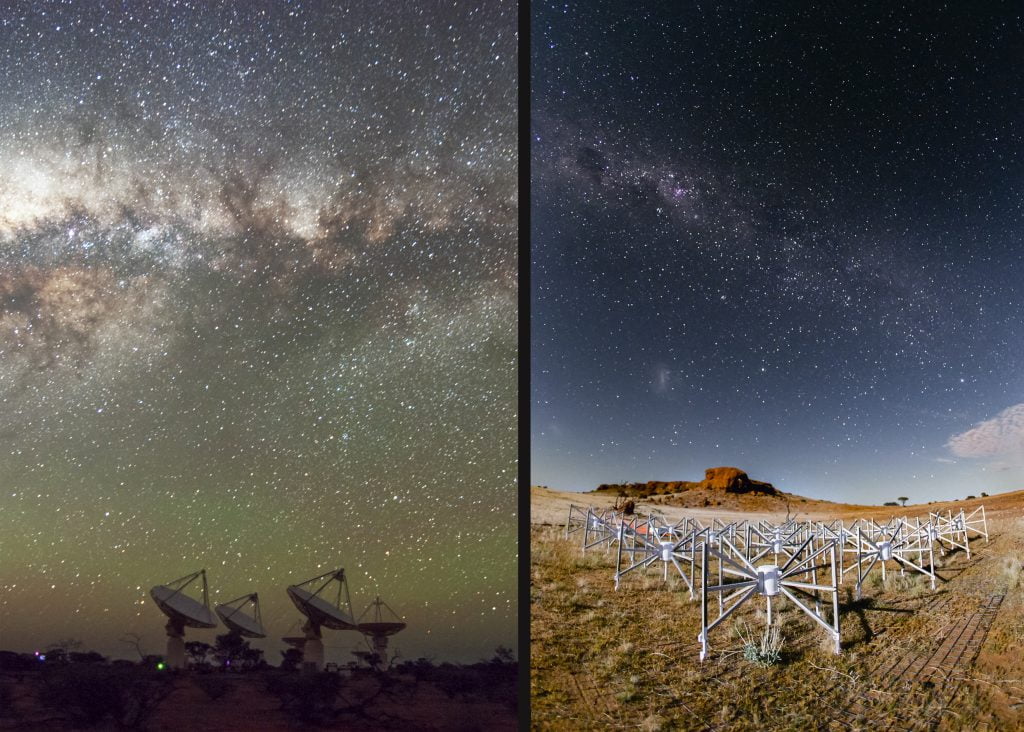LIGO makes waves with gravitational announcement, and Australian telescopes follow up
Several weeks ago, physicists at The Laser Interferometer Gravitational-Wave Observatory (LIGO) made waves with the announcement that gravitational waves – ripples in space time caused by a violent cosmic event taking place in the distant Universe – had finally been observed 100 years after Albert Einstein predicted their existence.
Australian researchers and telescopes played an exciting part in the follow-up observations, showcasing the capabilities of the Square Kilometre Array precursors located in the Western Australian outback.
Research published last month describes the follow-up program that began soon after the gravitational wave candidate was first identified by LIGO in September 2015. Within two days of the trigger, 21 teams responded to the alert and began observations with satellites and ground-based telescopes around the world. Over the next three months, observations were performed using facilities spanning from radio to gamma-ray wavelengths.
The Australian radio telescopes involved in the EM follow-up are both located at CSIRO’s Murchison Radio-astronomy Observatory (MRO) – the Australian SKA Pathfinder (ASKAP) and the Murchison Widefield Array (MWA). Both instruments offer a wide field of view, high sensitivity and quick response times, and are complemented by high-speed supercomputing capabilities, making them valuable additions to the LIGO/Virgo collaboration.
With its huge field of view, the MWA was the first radio telescope in the world to respond to the call from LIGO to hunt down the source of the unconfirmed gravity wave detection. Not long after, ASKAP swung into action, using the first of its antennas equipped with a Phased Array Feed (PAF) receiver to make multiple observations of the trigger region over the course of the following week.
The challenge of conducting follow up work for gravitational wave surveys is that the position of the source is not well know and is located somewhere within a large region of sky. For telescopes with a large field of view, like ASKAP and MWA, this is a great advantage.
“LIGO gives us two things: the area of sky to look at and the time the trigger started,” explains Keith Bannister, one of the CSIRO astronomers involved in the ASKAP follow-up, “With a wide field of view, good sensitivity and the 1 GHz observing frequency, ASKAP is an ideal instrument for finding EM counterparts. And, we now have the infrastructure in place so that when LIGO detects a trigger, we have the capability to do a follow-up observation.”
“We’re yet to detect anything, but just to be involved in this program is a great thrill,” he continues, “It’s exciting to think how much more we’ll be able to contribute with the full ASKAP telescope, when all 36 antennas are installed with Mk II PAFs.”
The MWA, which has been in full operations since mid 2013, has cooperative agreements with LIGO and other telescopes to follow up time-critical astronomical events such as gravitational wave events and gamma-ray bursts. Having no moving parts, the MWA is very agile and can be observing the sky moments after receiving the alert.
“The MWA automatically accepts alert messages from other instruments like LIGO and begins observing the source in less than eight seconds,” MWA Director Dr Randall Wayth of Curtin University (ICRAR) said.
“Although there was no detection for this first event, we’re excited about being part of the international electromagnetic follow-up to these events.”
The MWA is currently undergoing an expansion phase that will double its angular resolution on the sky. This increased resolution will help localise the sources of GW events when a follow-up detection occurs.
“It’s been fantastic to follow-up this momentous event with the MWA. The unique capabilities of the telescope really shone in this, allowing us to dominate with our coverage of the sky. The hardest part has been keeping this quiet for the last few months,” said MWA project scientist, Professor David Kaplan.
The sentiment is echoed by ASKAP Project Scientist Lisa Harvey-Smith, who notes that two of the ASKAP Survey Science Projects, VAST and CRAFT, are dedicated to transient searches.
“It is very exciting for ASKAP to be involved in the international efforts to detect electromagnetic emission from this gravitational wave event. Our PAF receivers make ASKAP a very powerful instrument for detecting radio waves from these events, and our science teams are looking forward to continuing this work as part of the Early Science program that will start this year. ”
Click the images below to open a larger version.

Footprints of follow-up observations, showing radio fields (red), optical/infrared fields (green), and XRT fields (blue).

Australian radio telescopes involved in the gravitational wave follow-up collaboration are ASKAP and the MWA, located at CSIRO’s Murchison Radio-astronomy Observatory. Both instruments offer a wide field of view, high sensitivity and quick response times, complemented by high-speed supercomputing capabilities, making them valuable additions to the LIGO/Virgo collaboration. Image credits: ASKAP (Alex Cherney), MWA (Pete Wheeler).
More information
The SKA will look at different gravitational waves from those detected by LIGO. While LIGO has detected gravitational waves as they pass through the Earth, the SKA will detect gravitational waves as they pass through our galaxy, helping us confirm our model of the expansion of the Universe and the formation of galaxies themselves.
See here for more https://www.skatelescope.org/news/ligo-ska-gw/

